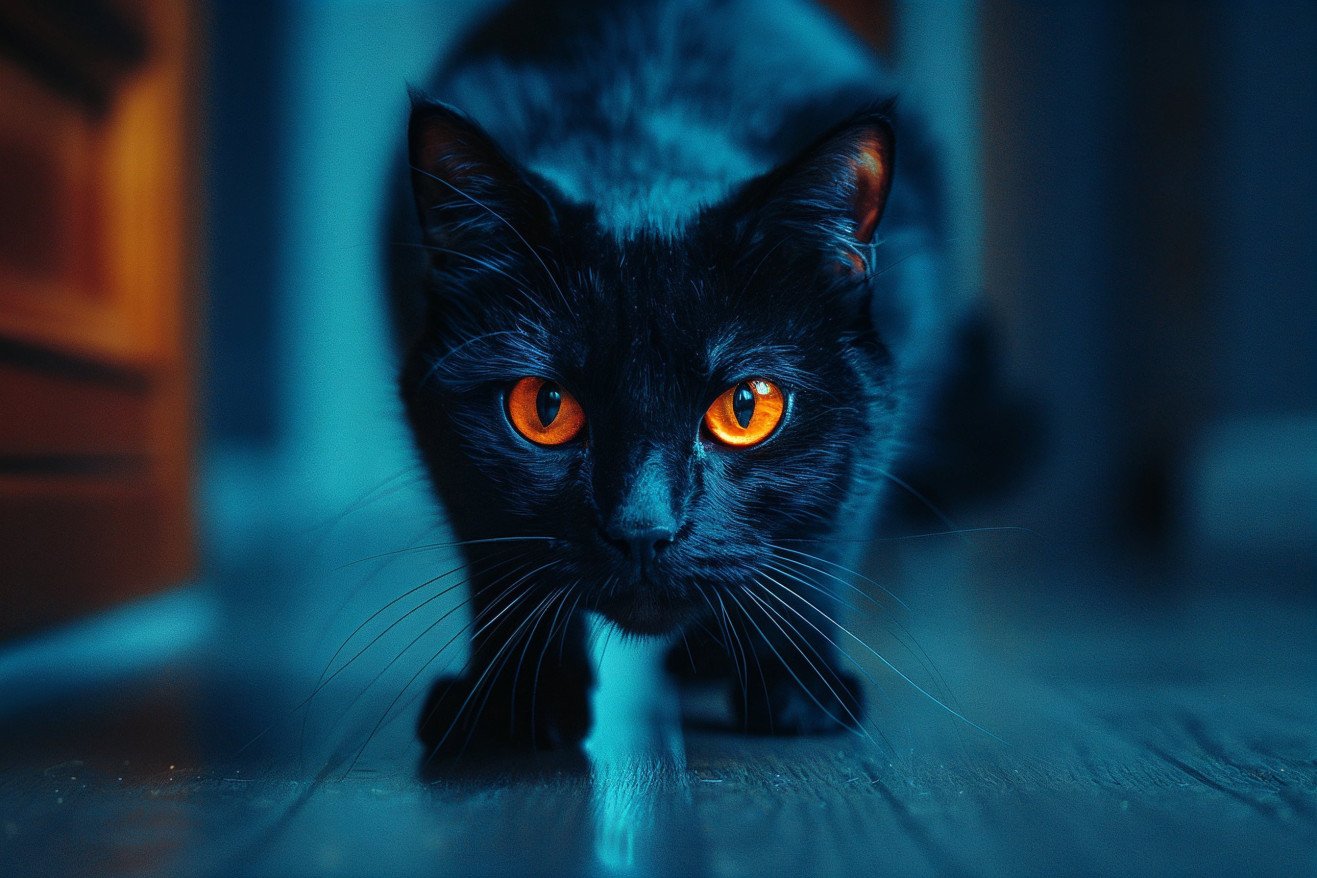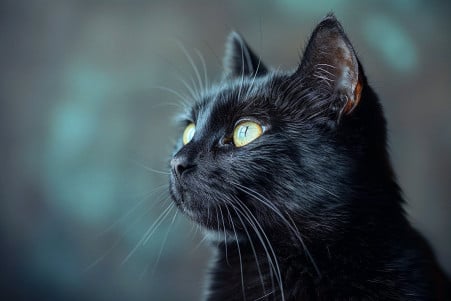Can Cats See Infrared? The Science Behind Feline Night Vision
9 April 2024 • Updated 9 April 2024

While cats can't see infrared light, they can see better in low light than humans. This is due to several factors, including larger pupils and an extra layer of reflective cells in their eyes that help them use light more effectively across the entire visual spectrum. Together, these factors make it possible for cats to have excellent night vision.
In this article, we'll look at peer-reviewed research from animal vision and feline physiology scholars to learn more about the fascinating optics of cat eyes. This work goes in-depth into the biological characteristics that make it possible for cats to have such good vision in low-light conditions. By the end, you'll know exactly what light wavelengths cats can see and why their night vision is so much better than ours.
Can cats see infrared?
The Evolution of Cat Eyes: How They've Adapted to See in the Dark
Cats' eyes have evolved to enable them to see in the dark in ways that are quite different from the human eye. For example, cats have larger corneas and pupils than humans, which means more light can get in. Also, the vertical slit pupils of cats help them to judge the distance to their prey and can adjust the amount of light that comes in by 135 times, while the circular pupils of humans can only adjust by 15 times.
One of the most important differences is the presence of the tapetum lucidum, a reflective layer behind the retina that reflects light back to the photoreceptor cells, which improves night vision. Cats have more rod cells than cone cells, which means they have better night vision and motion detection but less color vision than humans. In addition, cats have a flicker fusion rate of 70Hz, which means they can see fast movements more easily, which is helpful when they're hunting at dawn and dusk.
Infrared Vision: Cats vs Other Animals With Infrared Vision
While cats don’t have true infrared vision, some cold-blooded animals have evolved the ability to detect infrared radiation directly. According to Sciencing, snakes in the pit viper family have heat-sensing pits on either side of their face that allow them to see the infrared radiation given off by warm-blooded animals, enabling them to detect prey even in total darkness. Meanwhile, blood-sucking insects like mosquitoes and bedbugs can see in the infrared spectrum and use it to find hosts by detecting their body heat and carbon dioxide emissions.
Some fish also have the ability to see in the infrared spectrum. Per Nature, salmon and goldfish can see infrared light, which they use to help them forage and navigate in the turbid waters they call home. Bullfrogs can also see in the infrared spectrum, with their vision shifting to match the light levels in their environment.
In contrast, cats have evolved to prioritize low-light vision over infrared vision through trade-offs such as increased rod cell numbers and a reflective tapetum lucidum. As UCSB Science Line notes, these trade-offs have led to the evolution of cat eyes that are well-adapted for hunting in the low light of dawn and dusk but that are less well-suited for directly detecting infrared radiation than those of other species.
Infrared Vision: Nanoparticles and Nature
In response to the limitations of mammalian vision, scientists have developed a groundbreaking new treatment using engineered nanoparticles that can temporarily give mammals infrared vision. According to ScienceDaily, a single injection of the nanoparticles into the eyes of mice enabled them to see infrared light for up to 10 weeks. The nanoparticles bind to the photoreceptor cells in the retina and transform infrared light into visible green light that the brain can interpret, allowing the mice to see infrared patterns even in daylight.
UMass Medical School explains that the technology uses lectin proteins to target and bind the nanoparticles to the photoreceptors in the retina. Once attached, the nanoparticles act as tiny antennas that can convert near-infrared light into a visible green signal that the eye can pick up using its existing machinery.
As Singularity Hub points out, this method bypasses the limitations of mammalian vision, which is normally confined to the visible light spectrum, and researchers believe it could eventually be used to give humans infrared vision, which could have implications for everything from civilian encryption and security to military uses.
In addition, thermal imaging cameras use the detection of infrared radiation to measure heat and show temperature differences, as MoviTHERM and Lynred have explained. So while cats may not have true infrared vision, ongoing research into animal infrared vision has led to the development of a number of technologies that could one day allow humans to see beyond the visible spectrum.
Cats Can't See Infrared Light
Despite their excellent night vision, cats can't see infrared light. This is in contrast to other animals, such as dogs and mustelids (members of the weasel family), which can see infrared light that's outside the range of human vision, according to PMC.
The lack of infrared vision in cats may be due to evolutionary trade-offs or constraints. As UCSB Science Line points out, the visual systems of different species have evolved to meet the demands of their particular environments and lifestyles. While cats evolved to see well in low light with adaptations like the tapetum lucidum, this may have prevented them from evolving the ability to see infrared light.
It's worth noting that Animal Eye Associates observes that cats' inability to see infrared light is balanced by the fact that they have the broadest hearing range of any mammal, extending from 48 Hz to 100 kHz. This suggests that any limitations in their vision have been compensated for by their exceptional hearing, which would have helped them hunt effectively.
Conclusion: Understanding Cats' Infrared Vision
While cats can't see true infrared light, their eyes are well-suited for seeing in low-light conditions. Cats' larger pupils, higher rod cell count, and the tapetum lucidum all contribute to their superior night vision compared to humans. This enables them to hunt effectively from dawn to dusk, and their ability to detect motion is especially sharp.
Cats' limited infrared vision is a result of evolutionary trade-offs that favored other visual adaptations. Studies of infrared vision in animals are ongoing and continue to inform the development of human vision technology.


